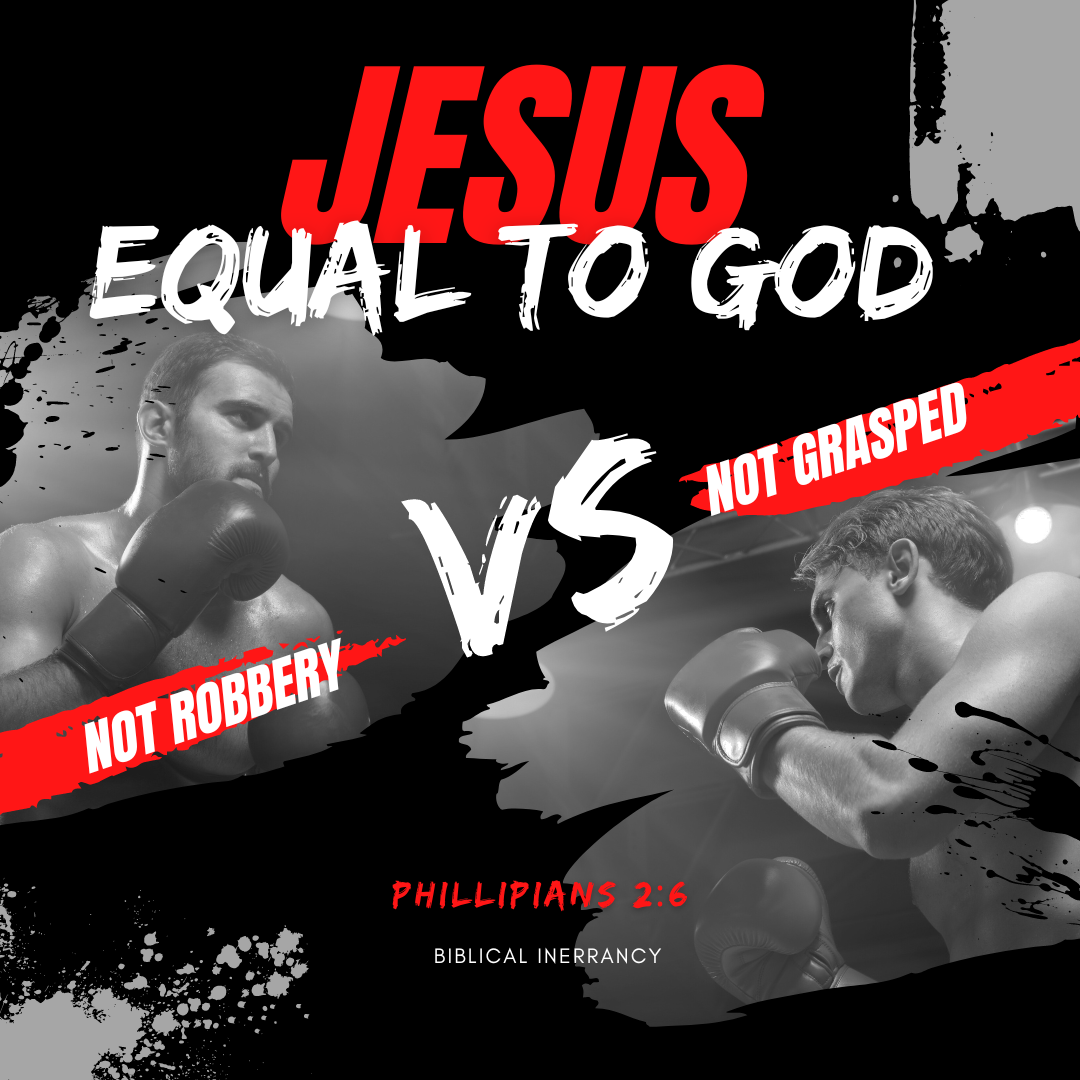- The KJV says that Jesus “thought it not robbery to be equal with God”
- The ESV says that Jesus “did not count equality with God a thing to be grasped”
Tertullian quoted Phil 2:6 in “On the Resurrection of the Flesh” stating it accurately “thought it not robbery to be equal to God” and again in “Against Praxeas” he quotes the whole verse: “who, being in the form of God thought it not robbery to be equal to God”
- He used his equality with God to do miracles: Mt 9:6
- He allowed himself to be worshiped: Luke 19:40
- He proclaimed it plainly:
- In John 10:30 both the KJV (TR representative) and the ESV (NU representative) deliver the quote by Jesus “I and my Father are one” KJV and “I and the Father are one” ESV
- John 8:58 “Before Abraham was, I am.” KJV and ESV
- John 12:45 Jesus equates seeing him with seeing the Father.
- In John 10:30 both the KJV (TR representative) and the ESV (NU representative) deliver the quote by Jesus “I and my Father are one” KJV and “I and the Father are one” ESV
In light of the historical evidence and careful discernment, it becomes evident that the reading of Philippians 2:6 from the Novum Testamentum Graece (NU) version, as reflected in the ESV translation, carries inconsistencies and contradicts the coherent theological framework maintained by the Textus Receptus (TR) reading, as found in the King James Version (KJV). The diverse citations from early Church Fathers such as Clement of Alexandria, Tertullian, and Origen, who consistently uphold the TR reading, provide a strong case for the authenticity of “thought it not robbery to be equal with God” as opposed to the NU’s “did not count equality with God a thing to be grasped.”
Furthermore, a comprehensive examination of Jesus’ teachings and actions throughout the New Testament underscores the notion that Jesus not only considered his equality with God to be intrinsic but also demonstrated this understanding through his miracles, acceptance of worship, and explicit statements regarding his divine identity. The consistency of these references aligns with the TR reading and portrays a coherent picture of Jesus’ self-perception as God.
As believers uphold the principles of biblical inerrancy and preservation, it is crucial to hold translations to a higher standard, one that is fully consistent with the theological tenets expressed in the original text. The conclusion drawn here emphasizes that the evidence points towards the TR reading as more faithfully representing the intended message of Philippians 2:6 and maintains the vital doctrines of Preservation and Inerrancy, which are foundational to the Christian faith. Thus, based on historical and theological considerations, it is prudent to reject the NU Philippians 2:6 reading and the translations that align with it in favor of preserving the doctrinal integrity of the Christian Scriptures.
“In the beginning was the Word, and the Word was with God, and the Word was God.”
——————————————-
[Variations from the traditional text generally represent the Alexandrian or Egyptian type of text described previously in “The New Testament Text.” They are found in the Critical Text published in the twenty-sixth edition of the Nestle-Aland Greek New Testament (N) and in the United Bible Societies’ third edition (U), hence the acronym, “NU-Text.”] -NKJV preface
for a list of places where the new bibles based on the NU cause error LINK

